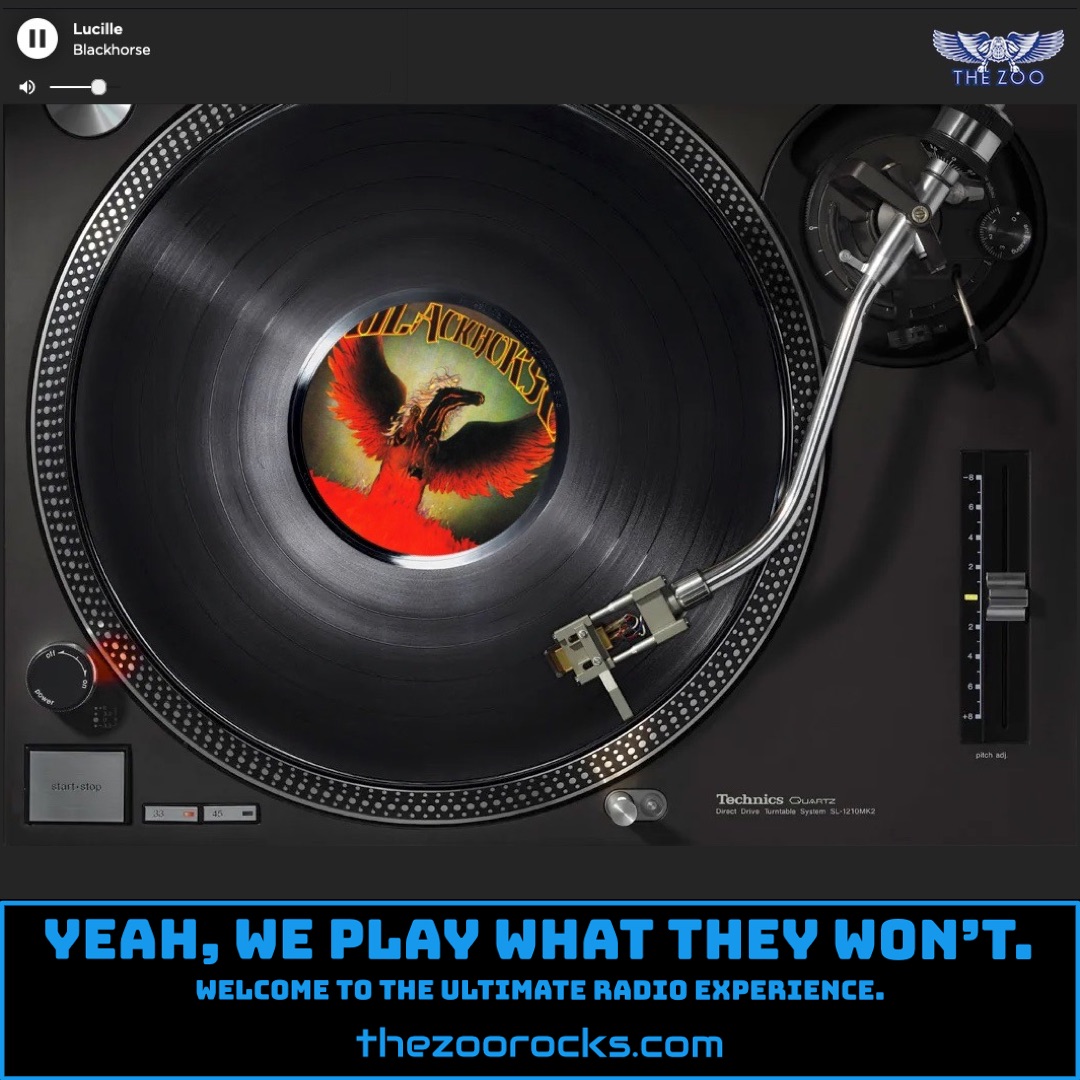Super Trouper
Deep Purple
The Zoo Crew is spinning the infectious grooves of "Super Trouper" by Deep Purple from their 1973 album Who Do We Think We Are, and the Zoo Freaks are surely vibing to its bluesy, hard-rock energy. One juicy piece of trivia about this track comes from its recording context: the song was laid down during a tumultuous period for the band, with tensions running high among members, particularly between vocalist Ian Gillan and guitarist Ritchie Blackmore. Despite the chaos, "Super Trouper" emerged as a standout, with its chromatic blues-based riff in E minor, as noted on Genius, showcasing Blackmore’s inventive guitar work and Gillan’s soulful wail. The song’s title, often mistaken for “Trooper,” actually refers to the massive arc spotlights used at rock concerts, a nod to the band’s larger-than-life stage presence. A comic strip creator on 1977thecomic.com shared a personal anecdote about working with these “beast” spotlights in the late ’70s, noting their intense light and manual operation, which ties directly to the song’s imagery of shining in a “rock and roll sky.”
Another tidbit about "Super Trouper" is its production flair, particularly the use of a flanger effect on Blackmore’s guitar during the chorus, giving it a psychedelic edge that’s almost proto-boogie, as described in a review on Mundo Metal BR. This effect was achieved in the studio by physically manipulating tape reels, a technique that screams ’70s ingenuity. Fans on Reddit have mixed feelings about the album, with some calling "Super Trouper" a highlight for its catchy riff and others feeling it pales compared to Deep Purple’s heavier hits like “Smoke on the Water.” Still, the song’s raw energy and Jon Lord’s shimmering Hammond organ make it a gem for those who dig the band’s bluesier side, as one fan on Prog Archives likened it to early Uriah Heep vibes.
Deep Purple got their start in 1968 in London, originally under the name Roundabout, a concept dreamed up by drummer Chris Curtis of The Searchers. Curtis pitched the idea of a “supergroup” with revolving members to businessman Tony Edwards, who, along with partners John Coletta and Ron Hire, funded the venture through their company Hire-Edwards-Coletta Enterprises. The band’s early lineup included Ritchie Blackmore on guitarist, Jon Lord on keyboards, Rod Evans on vocals, Nick Simper on bass, and Ian Paice on drums. Initially leaning into psychedelic and progressive rock, they shifted to a heavier sound with their 1970 album Deep Purple in Rock, cementing their status as pioneers of hard rock and heavy metal alongside Led Zeppelin and Black Sabbath. The iconic Mark II lineup, featuring Ian Gillan and Roger Glover, debuted on 1969’s Concerto for Group and Orchestra and propelled the band to global fame with albums like Machine Head and the live Made in Japan. Their relentless touring and raw power earned them a 1975 Guinness World Record as “the globe’s loudest band” for a 1972 show at London’s Rainbow Theatre.
Today, Deep Purple remains active, with their official website offering tour dates, merch, and news about their latest releases. You can follow them on Facebook for updates and nostalgic throwbacks, or check out their Instagram for behind-the-scenes shots and concert highlights. On X, they share quick updates and interact with fans, keeping the Purple spirit alive. For Zoo Freaks wanting to dive deeper, the fan-run Deep Purple Appreciation Society is a treasure trove of discographies, reviews, and archival goodies. The Deep Purple Fans Facebook Group is another hot spot where fans swap stories, rare photos, and opinions on everything from “Super Trouper” to the band’s modern era. Whether you’re a longtime freak or new to the zoo, Deep Purple’s legacy is a wild ride worth exploring.

